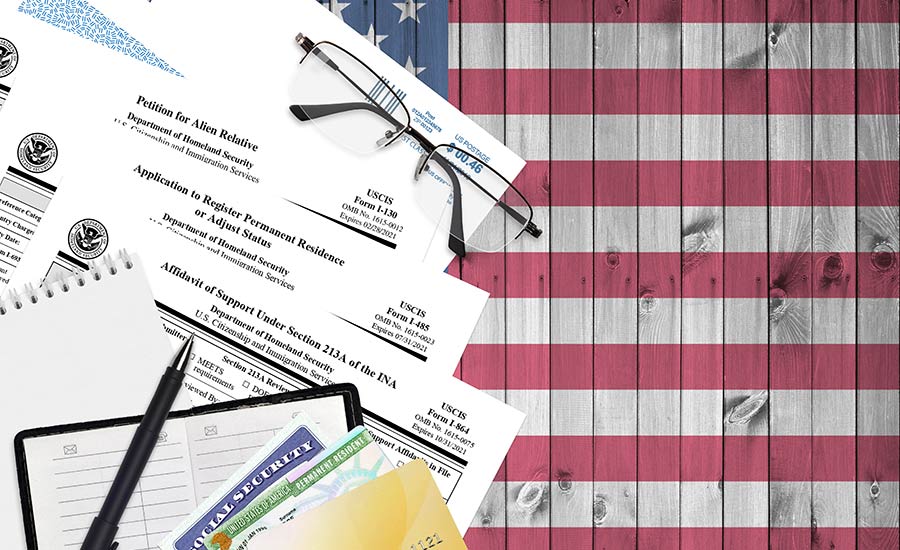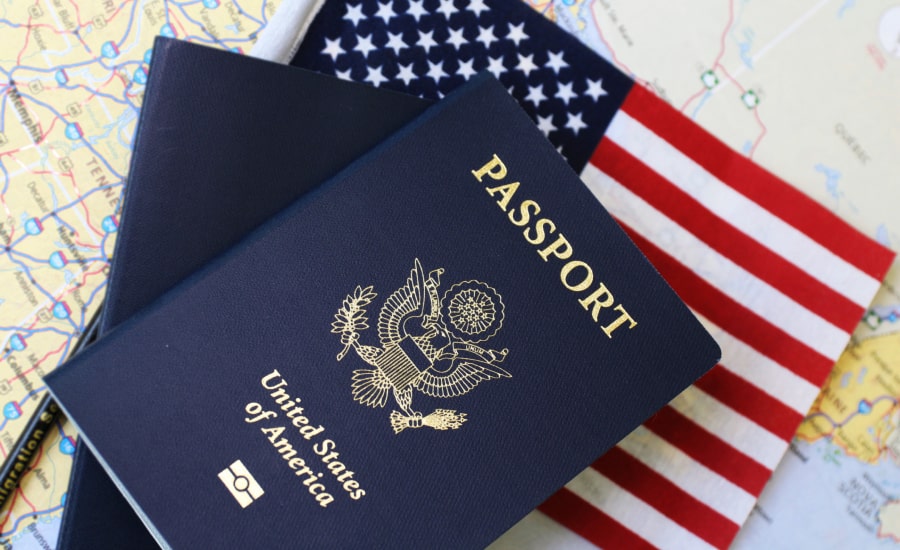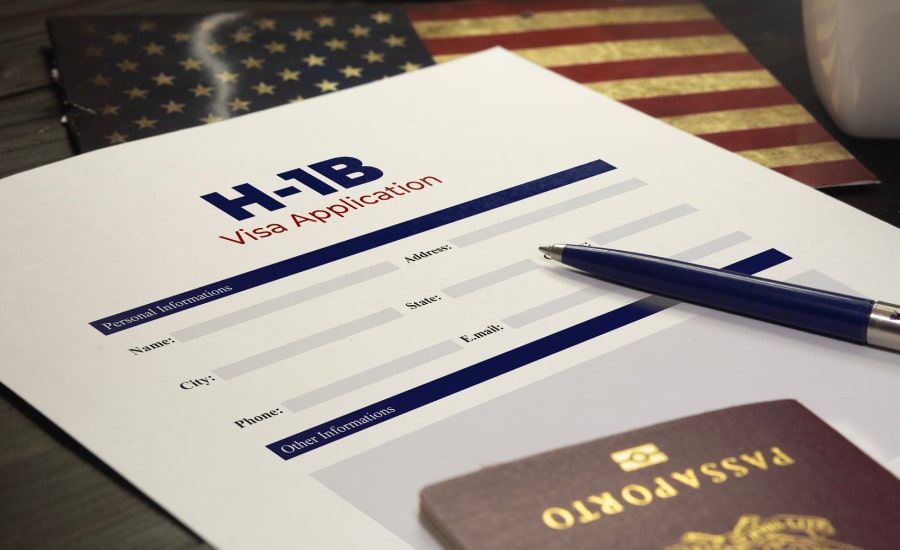

The Application to Register Permanent Residence or Adjust Status, Form I-485, is an important part of the immigration process that allows you to obtain lawful permanent residence in the United States (a Green Card).
If you are planning on moving to the U.S. or adjusting your status to remain in the country after entering the U.S. legally, you’ll need to submit Form I-485 as either a principal or derivative applicant.
Found in part 2 of the form, we’ll explain the difference between principal and derivative applicants, how to determine which box to check, and what additional documents you need to submit along with Form I-485.
We’ll also explain how our experienced immigration team at Spar & Bernstein can help you navigate the process of achieving your American Dream.
What Is A Principal Applicant?
A principal applicant, also known as a beneficiary, is a person who applies for immigration status in the U.S. either for themselves or on behalf of their entire family.
This type of applicant must file the necessary documentation and provide evidence that they, along with all of those listed on their application, meet the eligibility requirements for immigration.
When the applicant’s petition is approved, their family members are typically also allowed to immigrate with them.
If you are applying for a Green Card based on employment or for a family-based Green Card as a relative of a U.S. citizen, then check the “Primary Applicant” box on Form I-485.
What Is A Derivative Applicant?
A derivative applicant is a person who seeks immigration benefits through a principal applicant. This type of applicant cannot petition for permanent residence or adjustment of status directly.
Typically, a derivative applicant includes:
- The spouse of a principal applicant
- The unmarried child or children of the principal applicant, under 21 years old
If you are the spouse or unmarried child of the primary applicant and are seeking permanent resident status through them, then check the “Derivative Applicant” box on Form I-485.
How To Determine If You Are A Principal Applicant Or A Derivative Applicant
When filing Form I-485, you’ll need to check a box on part 2 of the form to denote what type of applicant you are.
You are a principal applicant if you are:
- Seeking lawful permanent residence based on employment
- Seeking lawful permanent residence based on immediate relationship with a U.S. citizen, meaning you are their spouse, parent, sibling or unmarried child (or stepchild)
- Seeking lawful permanent residence based on future immediate relationship (fiancé)
You are a derivative applicant if you are:
- A spouse or unmarried child of a principal applicant and are not immediately related to the U.S sponsor
If you are a derivative applicant, you will be eligible to adjust your status after U.S. Citizenship and Immigration Services (USCIS) approves the immigrant petition of the principal applicant.
When your application is approved, you will gain the same benefits and protection as the primary petitioner, in terms of residency and work permits. You will also have access to public health care, education, and other privileges.
Regardless of which type of applicant you are, you must submit Form I-485 in order to obtain a Green Card.
In part 2 of the form, Application Type or Filing Category, Item Numbers 1.a. – 1.g, you must mark the immigrant category you are applying under, whether principle or derivative.
Note that there are immigrant categories that do not accept derivative applicants, whereas others allow additional family members to be listed as derivative applicants. If you’re not sure how to file, an immigration lawyer can help you.
Our experienced immigration attorneys at Spar & Bernstein can help you file Form I-485, determine which kind of applicant you are, and help you gather the additional documents you need to submit. Contact our team to set up a consultation!

When To File Form I-485
If you are a principal applicant, you should file Form I-485 if you are seeking an employment-based Green Card and meet the following criteria:
- USCIS approves your visa
- An immigrant visa number is available for your visa category
If you are a principal applicant seeking lawful permanent residence as an immediate relative of a U.S. citizen, you do not have to wait for a visa to become available — the immediate relative category offers unlimited number of immigrant visas.
In some cases, you may be able to file Form I-485 concurrently with Form I-130, Petition for Alien Relative or Form I-140, Immigrant Petition for Alien Workers which are submitted by your U.S. sponsor.
The concurrent filing offers several benefits:
- It allows you to apply for employment authorization (EAD) and travel permission (advance parole) for both the principal and derivative applicants
- It allows you to expedite the Green Card application process
If you are a derivative applicant, you should file Form I-485 once the principal applicant obtains status, or any time after the principal applicant files. Note that your application will not be approved until the principal applicant obtains lawful permanent resident status.
You must also meet the filing requirements and have a visa for your category immediately available when you file.
The path to obtaining lawful permanent residence in the U.S., including filing Form I-485, can be overwhelming. With 60+ years of experience in immigration law, our knowledgeable attorneys at Spar & Bernstein can help you every step of the way.
We will meet with you, review your case, help you complete and submit Form I-485, and help you gather the additional evidence needed to ensure your application is approved.
Evidence To Include With Form I-485
Depending on your visa category and other factors, the evidence you must submit with Form I-485 will vary.
Typically, the evidence will include:
- Two passport-style photos
- ID with a photo — for example, a passport, a military ID or a driver’s license
- Your birth certificate
- Documentation that proves you were inspected by an immigration officer when entering the U.S. and admitted or paroled into the country
- Documentation of your immigrant category
- Marriage certificate or other documents that prove your relationship to your U.S. sponsor
- Affidavit of support or confirmation of a bona fide job offer
- Evidence of financial support
- Report of medical examination and vaccination record
- Proof of continuously maintaining a lawful status since your arrival in the U.S.
Note that failure to submit the required evidence can result in the rejection of your application.
To ensure that you submit all of the documents needed with Form I-485, schedule a consultation with our experienced immigration team at Spar & Bernstein. We’ll help you prepare and file your application to avoid possible delays or rejection.

What Happens After You File Form I-485?
Here is what to expect after filing Form I-485.
1. Application Receipt
Once you submit Form I-485, you will get a receipt acknowledging that the USCIS received your application. This typically happens within 30 days of filing.
If you filed Form I-485 concurrently with Form G-1145, E-Notification of Application/Petition Acceptance, you will receive a confirmation notification by email or a text message within 24 hours of filing.
2. Biometrics Appointment Notice
Typically, within three to five weeks after filing Form I-485, you will receive a notice by mail, informing you about your biometrics appointment. During this appointment, officials will take your fingerprints, signature and photo, and run background checks to verify your identity.
The biometrics appointment takes place at a local Application Support Center (ASC).
3. Interview Notice
Generally, within 4-10 months of filing Form I-485, you will receive a notice for an interview at a USCIS office, where you will be required to answer questions based on the information you submitted. In some cases, the USCIS may choose to skip this process.
Expert tip: To prepare for your interview, explore Green Card marriage interview questions or learn how to reschedule your interview appointment, if needed.
4. Green Card
If your Form I-485 is approved by the USCIS, you will receive your Green Card by mail. This typically happens 8-14 months after filing and USCIS acknowledging receipt of the form I-485.
If your application is not approved, you will receive a notice explaining the reasons for the denial. (If your applicant is rejected, reach out to our team at Spar & Bernstein. We’ll review your case and figure out what we can do to help!)
How Spar & Bernstein Can Help You Obtain A Green Card
With an immigration history spanning six decades and thousands of success stories, our attorneys at The Law Offices of Spar & Bernstein represent immigration clients in all 50 states and across the globe.
From family and employment immigration to citizenship and naturalization, we approach each case with the utmost care and attention to detail.
If you are looking to obtain permanent residence in the U.S. or adjust your status, our experienced immigration lawyers will:
- Identify your eligibility for a Green Card
- Review your eligibility for adjustment of status
- Help you complete and file your application
- Help you gather and submit the additional evidence needed
- Represent you as needed
- Help you prepare for your interview with USCIS
- Track and update you on the progress of your case
To learn more about the Green Card process and other various immigration topics, check out our talk show, Brad Show Live, hosted by our Managing Partner, Brad Bernstein.
From live calls to social media questions, we offer legal advice on real-life immigration scenarios to help explain how the immigration system works.
Our goal is to make sure every person in need has access to legal representation. Contact our experienced team to set up a meeting, and we’ll explain how we can help you.
Disclaimer: attorney advertisement. prior successful results do not guarantee a similar outcome





